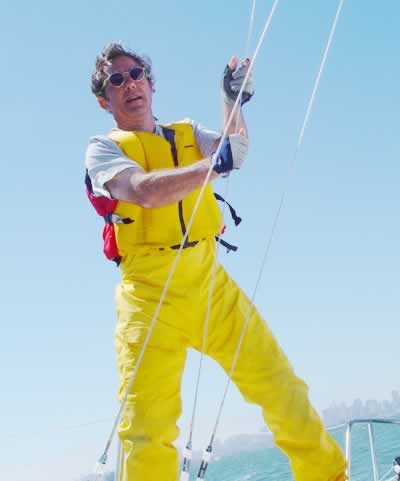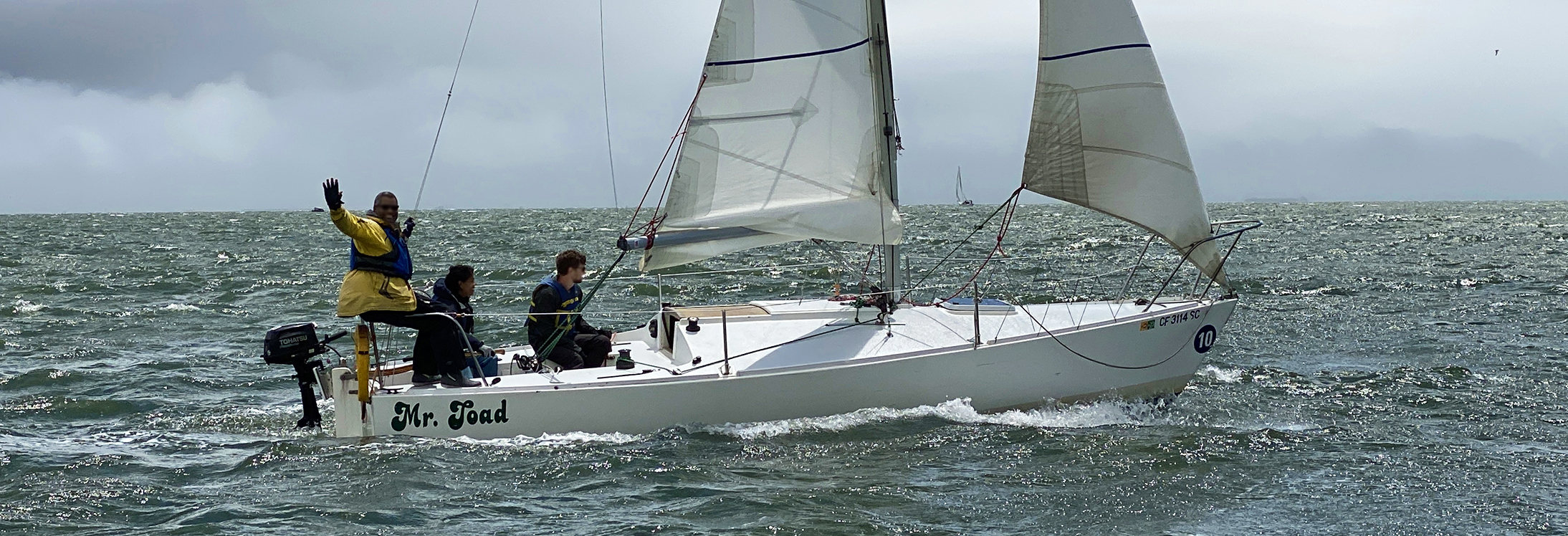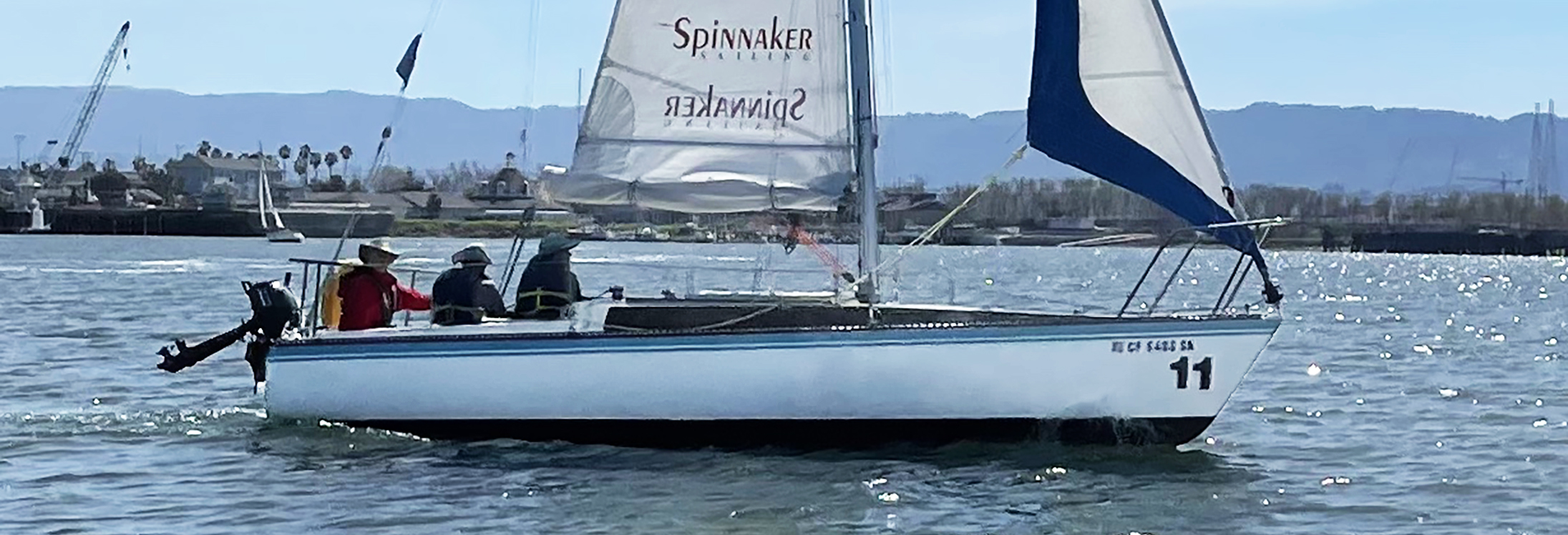
Dave Goeke, a seasoned sailor with over 40 years of experience on the Bay, recently had his first encounter with the J/24 sportboat model. Despite his extensive sailing background, Dave had primarily sailed the Merit 25, which he has used as an ASA 101 teaching vessel for nearly two decades. The introduction of the new ASA 102, Performance Sailing course, led Dave to Modern Sailing in Berkeley, where he spent a day "learning the ropes" of the J/24 under the guidance of Senior Instructor Eric Wittig. This article captures Dave's insights and comparisons between the J/24 and the Merit 25, highlighting the distinct characteristics and performance differences that make each boat unique.
First Impressions of the J/24 Sportboat Model
Written by Dave Goeke
Basic Keelboat Instructor, Spinnaker Sailing
Exactly how can someone with more than 40 years sailing on the Bay not have any experience on a J/24? Well, it happens. First you buy a Santana and fall in love with it. Then you live in the South Bay. And finally, you teach for twenty years at a school that doesn’t use them.
I have been sailing Merit 25s for over 20 years, and taught ASA 101 on them for nearly that long. This year ASA introduced ASA 102, called “Performance Sailing”, intended to be taught on a fixed keel sloop with tiller steering. I planned to take the Instructor Qualification Clinic so I could teach the class. To get prepared for the IQC, I wanted to take sailing lessons with an instructor certified to teach ASA 102. So, I spent a day sailing out of the Berkeley Marina at Modern Sailing on a J/24, tutored and coached by MSA Senior Instructor Eric Wittig. It was a great day.
I have been told the Merit 25 (more like the Merit 24.5) and J/24 share many similarities in design, but a day on the water with a J/24 after two decades on a M25 tells me these are very different boats. They have different performance characteristics, different construction, different weight, different weight distribution, a different standing rig, a different cabin top, a different transom, and a few ostensible similarities. The big difference is the J/24 is wider, and that explains many performance differences.
The J/24 is wider, heavier, with a lighter keel, and longer distance between rudder and keel. As soon as I started sailing the boat, many performance differences were immediately apparent. It is nearly a foot wider. It has a narrow transom and a narrow cockpit. The extra beam makes it harder to see a victim in water on the final approach of a man overboard drill, and to do this successfully requires keeping the victim in the water farther off leeward. The extra beam makes it much easier to sail backwards compared to the M25. The extra beam and transom-mounted rudder, with added distance between keel and rudder, adds marginally to the turning radius and makes turning slower.
It is much easier to handle the jib on a tack in the J/24. The cockpit well forward of the traveler has room for one person. All the jib sheet controls and winches are easily within arm’s reach. This skinny cockpit puts the jibsheet trimmer close to both winches, both sheet blocks, both jibsheet cleats, and both sheets, It is much easier to tack, especially at the start of a tack, to more precisely time release of the working sheet.
Mister Toad, a J/24 in Modern Sailing Berkeley's Sportboat Fleet.A Merit 25 sailing Redwood Creek.
There is cockpit room aft of the traveler for only one person. The helmsman’s cockpit area is very confined. The tiller handle comes up nearly to the main sheet block. Switching sides during a tack or gybe requires more agility and finesse. The main sheet is released with an upward pull which I like, but the block assembly is big, more complicated, and easy to tangle up with the standing part of the mainsheet on a gybe when a lot of loose sheet has to move across and over the sheet block assembly.
The M25 cockpit comfortably carries four people, two forward and two aft of the traveler. The J/24 cockpit seems optimized for racing but not for comfort.
The J/24 has a keel-stepped mast. On the M25, the mast is mounted on the coach roof and is supported with a compression post. Both have a fractional rig and adjustable backstay. The M25 has two lower shrouds and the aft shroud comes farther aft than on the J/24, which has one lower shroud. The second lower aft shroud on the M25 constrains main sail trim on a run or broad reach. The M25s I sail on have a roller-furling jib with a very high foot, making forward and leeward visibility easier. J/24s in the Modern Sailing fleet all have a hank-on jib with a low foot. The outboard on a J/24 is mounted to one side of the transom-mounted rudder. The rudder on an M25 is under the cockpit allowing the outboard to be mounted on the transom in the center.
Both boats have a deep keel well with structural supports to control keel wag. Both boats can be suspended from a crane with eye bolts on the keel. The M25 is 200 lbs lighter with 100 lbs more in the keel.
There are two windows on the M25, and none on the J/24. The curved coach roof on the J/24 looks like it gives more structural integrity. The cabin top and foredeck of an M25 will spring like a trampoline if you bounce up and down.
The M25 feels noticeably more agile and responsive. Turns are quicker and in a smaller radius. It is harder to sail backwards. To me it feels like acceleration is quicker. I think the extra beam and transom-mounted rudder give the J/24 a wider turning radius and a slower turning speed.
I’m not sure if I know what I like or I like what I know, but after 20 years and many hours I’m on much more intimate terms with the M25/24.5. Eric has years of experience on both boats and seems to like them both. On a typical spring Bay afternoon with a fresh breeze and heavy chop, both boats get tossed around, but they handle well and make for a thrilling ride. I hope you will come to Berkeley and spend a day on the J/24. I also recommend coming to the South Bay to take the M25 (24.5) for a spin. Tell us what you think!
I enjoyed a great day of sailing and a great lesson from Eric Wittig. He taught me lot. With all that help I passed the ASA 202 IQC a few weeks later. Many thanks Eric!




